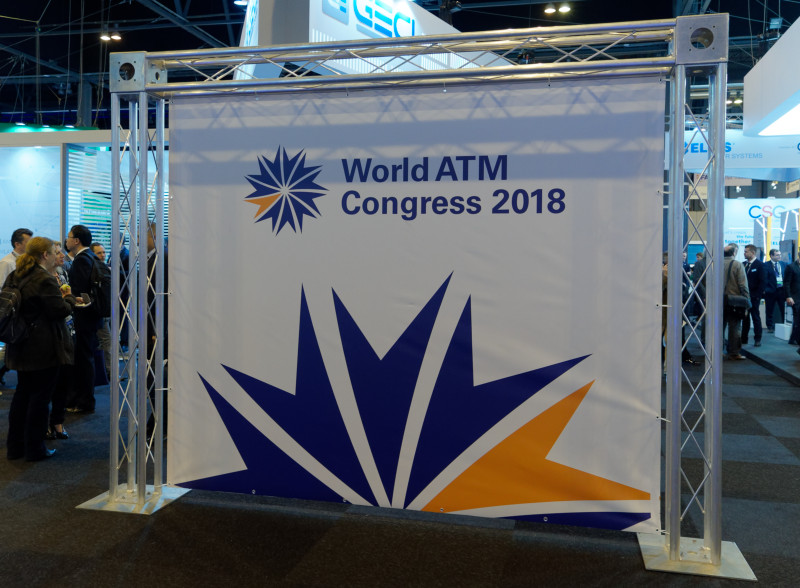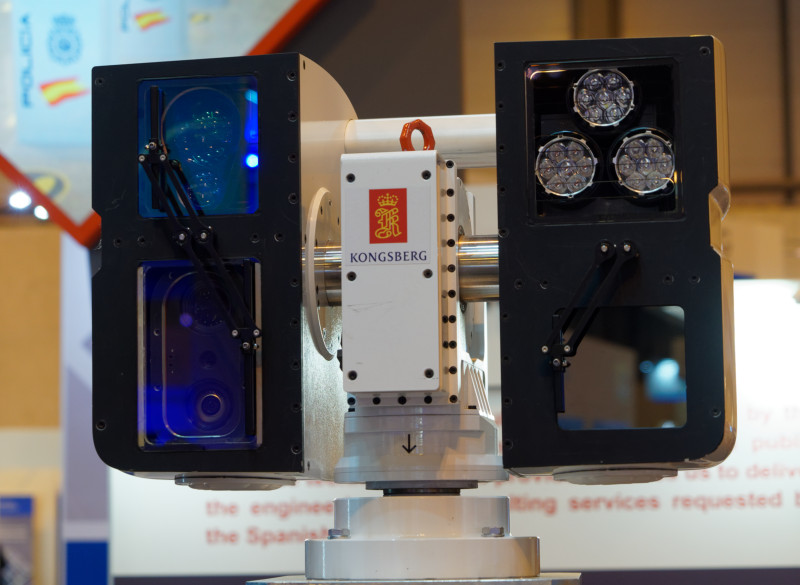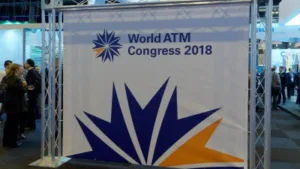 It’s quite a few years since we reported on the World ATM Congress, but this year we were able to get a short visit to Madrid to see developments in this world. Like the ECR show that we went to last week, the displays in this market are very specialised. Again like ECR the air traffic market used to be a very high resolution market, but because the source radar data has not increased in resolution (and nobody at the ATM Congress suggested any new standard is close) from the 28″ 2K x 2K that was really at the very high end when it was first developed and supported by very special CRTs. Later, the market moved to LCD, using the same size and shape as the existing CRTs.
It’s quite a few years since we reported on the World ATM Congress, but this year we were able to get a short visit to Madrid to see developments in this world. Like the ECR show that we went to last week, the displays in this market are very specialised. Again like ECR the air traffic market used to be a very high resolution market, but because the source radar data has not increased in resolution (and nobody at the ATM Congress suggested any new standard is close) from the 28″ 2K x 2K that was really at the very high end when it was first developed and supported by very special CRTs. Later, the market moved to LCD, using the same size and shape as the existing CRTs.

At the show, we heard that some operators are now using 43″ UltraHD displays, because they have enough resolution to include the 2048 x 2048 resolution that the radar screens use. However, others prefer the ‘traditional’ square 2K x 2K displays, partly because there is a very clear surround. Further, the 43″ panels are based on commodity LCDs (even if they have new electronics) and so do not have the same performance as the special square panels used in the 2K x 2K displays.
The companies in the markets are almost the same as well. We reported on Eizo and Foreseeson (Wide) from ECR and the third company that we saw at the ATM Congress was Esterline, which claims leadership and was previously Barco, until the Belgian company sold a number of its businesses to Esterline in 2014 (Barco to Sell Defence & Aerospace Unit to Esterline).
Virtual Control Towers
In wandering around the show, we noticed a number of large multi-display arrays and found there is an interesting development in the creation of ‘virtual’ control towers. We spoke to Ninox of Norway and Searidge Technologies of Canada (owned by Nav Canada and NATS (UK)), both of whom have been developing the concept.
Searidge told us that it is in the process of specifying a system for Heathrow that will use somewhere between 12 and 15 cameras, whereas Ninox uses very special rotating and scanning cameras to capture 360º video at up to five fps. The cameras, in both cases, are very high resolution and basically mimic the resolution of the eye of someone in the control tower.
 Searidge’s Virtual Control Tower. Image:Meko – click for higher resolution
Searidge’s Virtual Control Tower. Image:Meko – click for higher resolution
This means that if you pipe the video from the cameras to a remote location that has a lot of displays, you can get the same view as you would if you were “live”. Further, Ninox adds an infrared camera, with the image overlaid on the main camera and both companies also use object tracking to identify vehicles and aircraft, so you can argue that the view is even better than ‘live’. (and could it be the biggest/highest resolution AR system in the world?).
The Ninox system produces images with a resolution of 21600 x 4096 pixels, also quoted as 0.28mrad or 28cm at 1km. As well as the main scanning camera, special PTZ camera systems can be used to zoom into particular parts of the scene. Searidge was stitching individual camera streams to create 8K video.
 The Ninox PTP (PTZ) Camera can zoom in. Image:Meko
The Ninox PTP (PTZ) Camera can zoom in. Image:Meko
The technology allows remote operation of airports which can save cost and can be used, for example, to significantly extend the opening hours of small airports. Ninox has already installed a system in Røst, Norway and is in the process of developing systems for a total of fifteen towers in Norway. The company uses H.264 and H.265 for transmission of the videos. The system can, of course, also be used in simulation and training and for emergency backup (which is the purpose of the Heathrow installation, we understand). Searidge told us that it too uses H.264 and commodity video over ethernet technology to transmit the video.
While Ninox uses a camera that has horizontal resolution of 21K,
Drones a Concern
It was very clear from lots of activity at the show that drones are a very big cause for concern and a range of detection and elimination solutions were being shown at the event.

